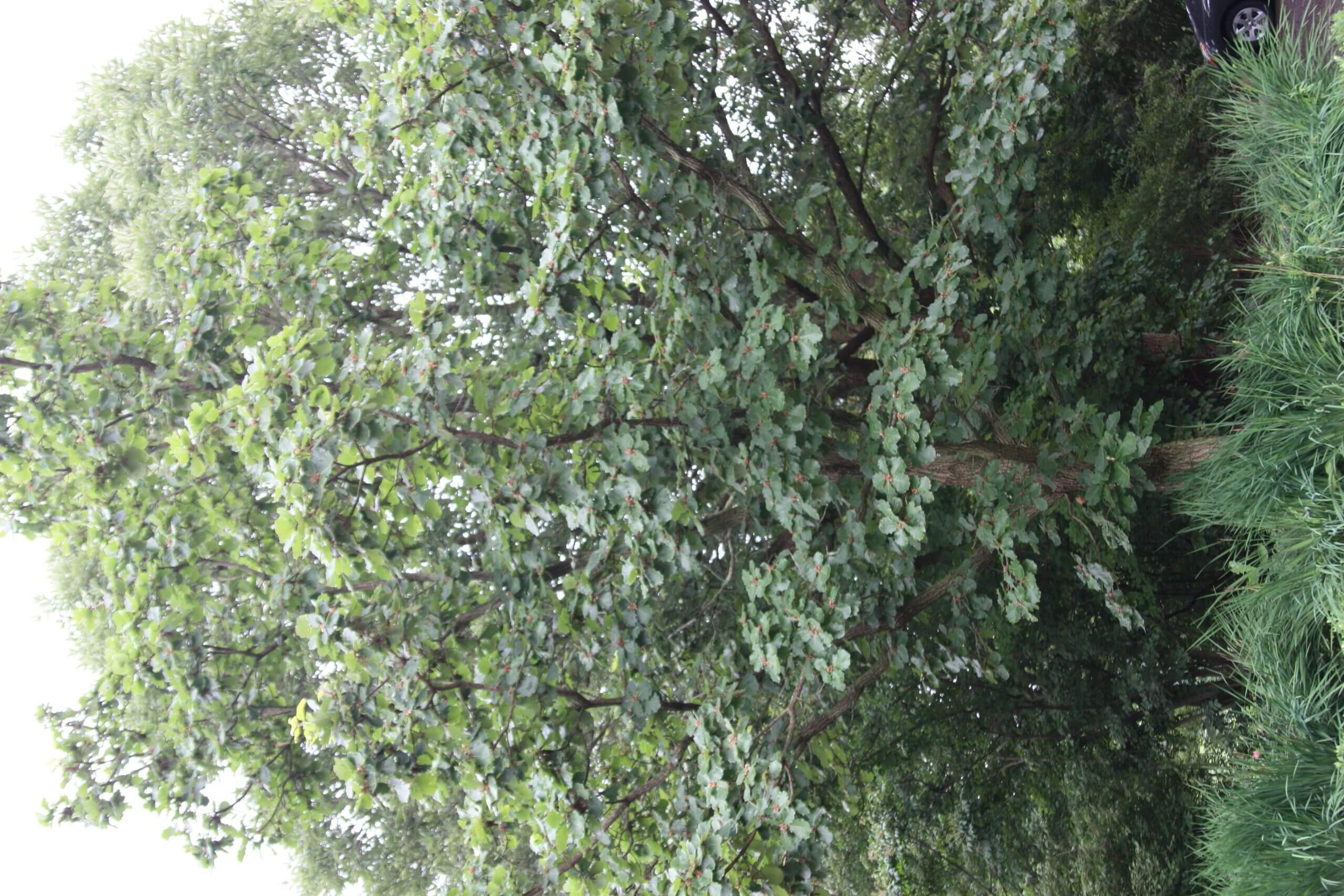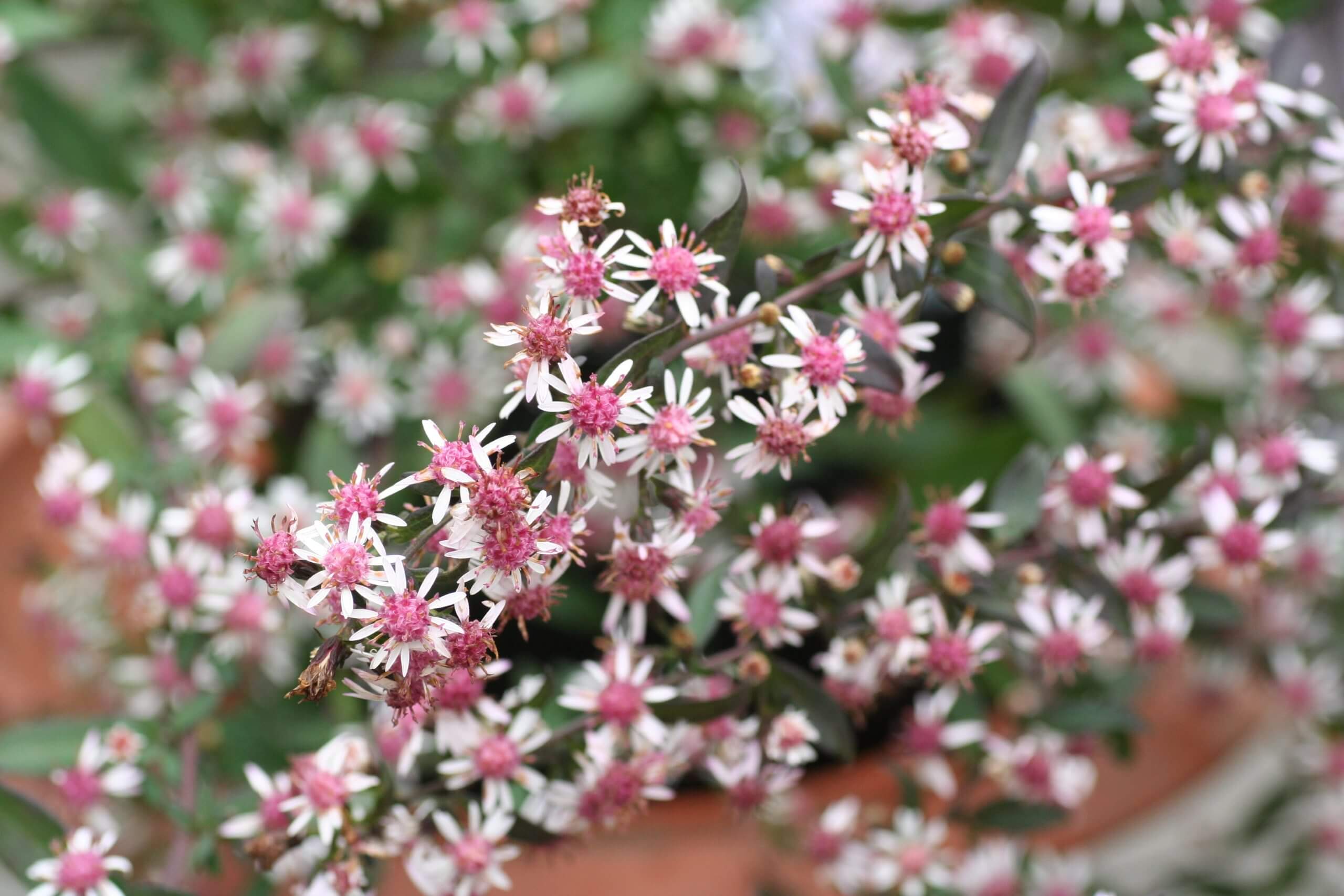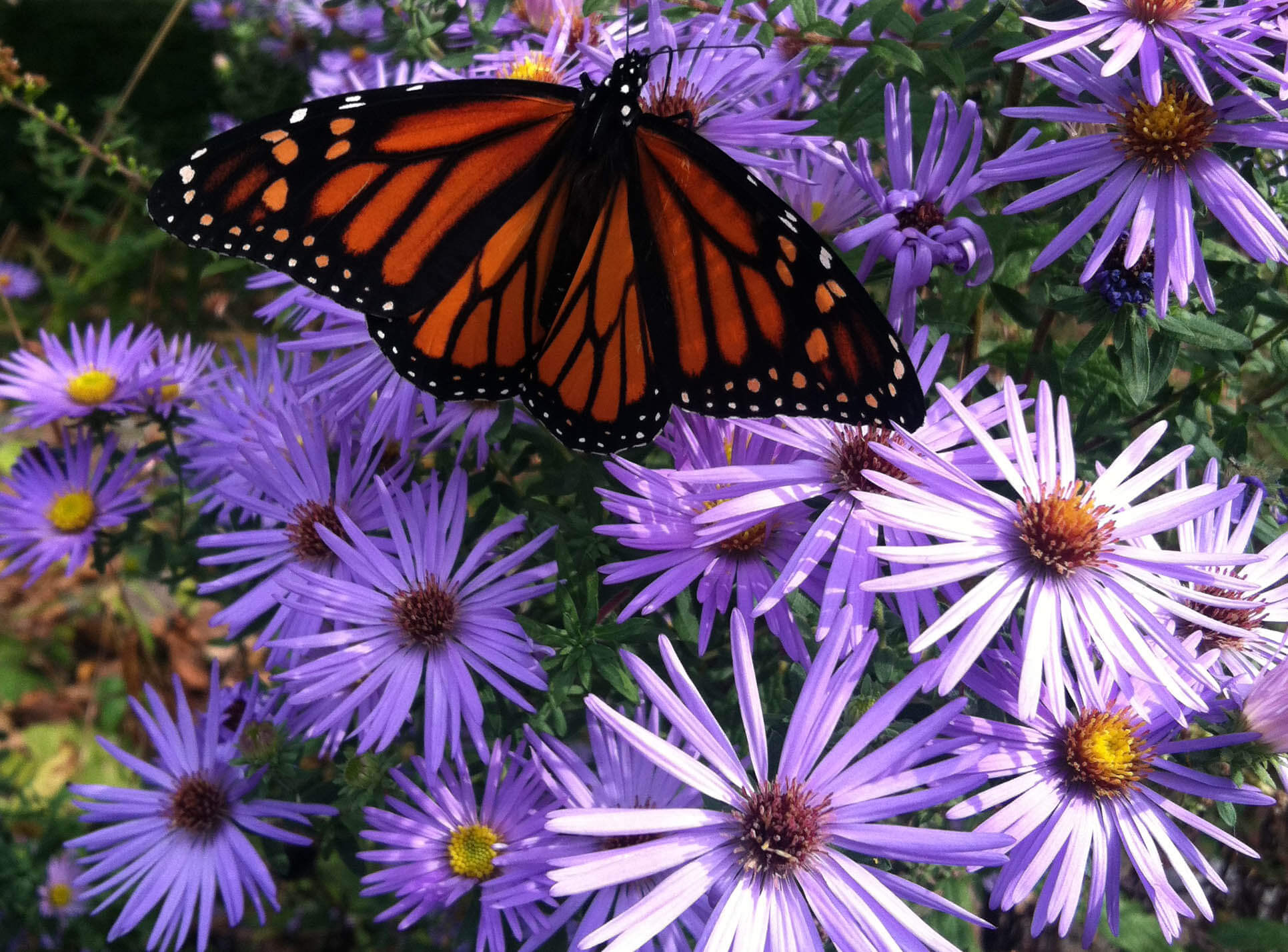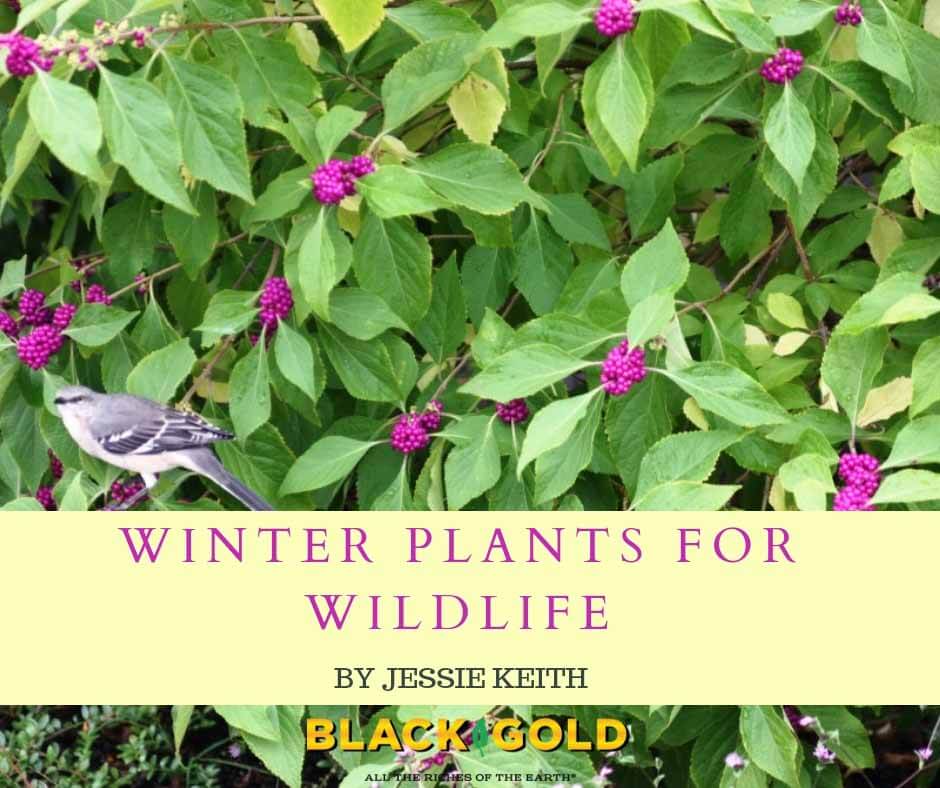
The winter garden is not dead and desolate. Fruits of summer and fall still linger on stems, providing vital food to wildlife in the depths of winter. More often than not, these plants also offer seasonal interest, making them win-win additions to our landscapes.
Winter Seeds for Wildlife
It’s all about seeds and berries when it comes to forage for winter birds. For many woodland mammals—such as mice, voles, rabbits, squirrels, chipmunks, and deer—nuts, berries, and roots are essential food sources. Some of these animals may not be the most welcome creatures in your garden, but the more you feed them along the periphery of your landscape, the less likely they are to forage in more intimate garden spaces near the home. Smaller herbivores also feed important winter predators, such as foxes, hawks, and owls, to keep home ecosystems healthy.
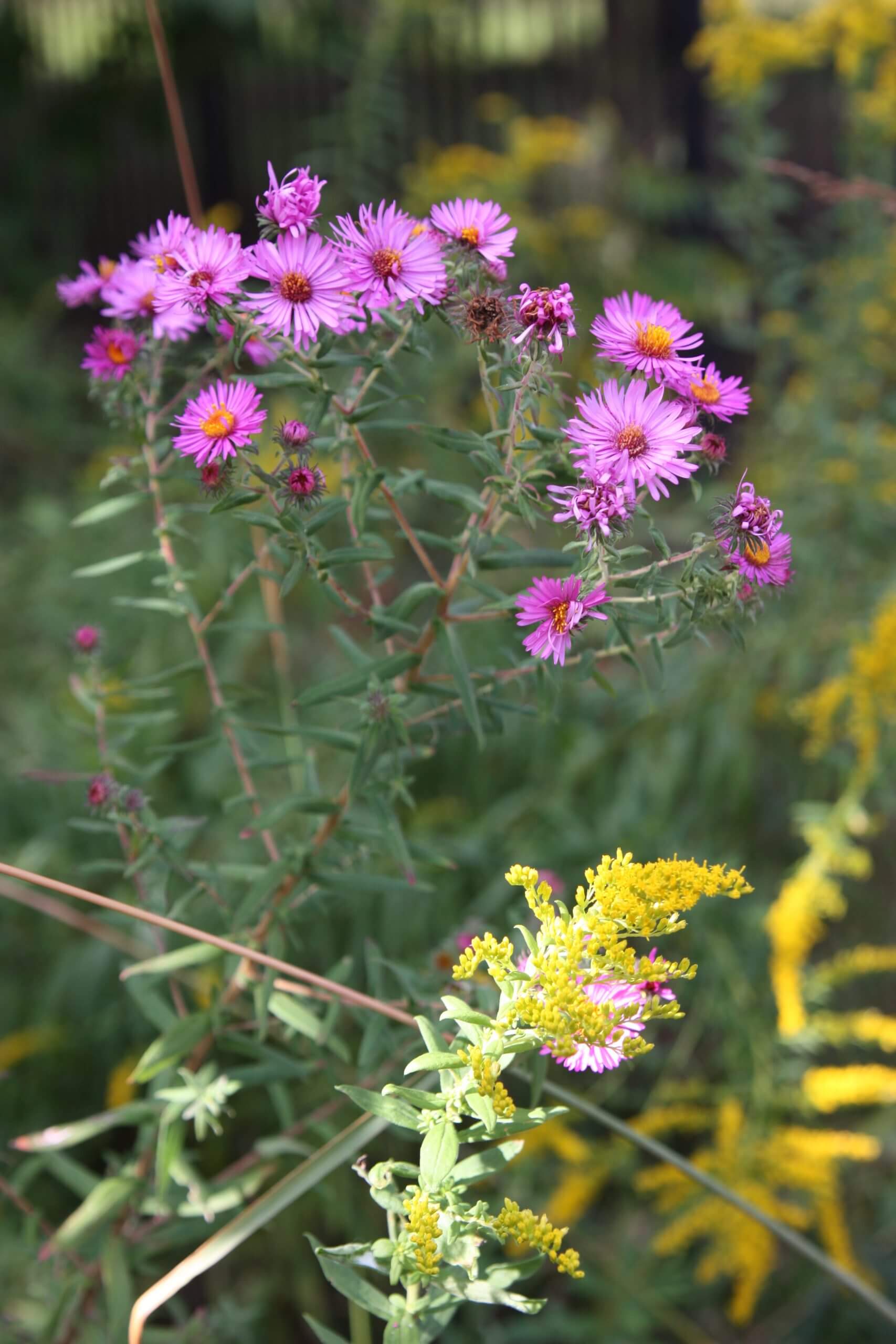
Daisies
The most valued seeds for birds (see the table of common North American birds and their preferred forage plants below) come from flowers in the daisy family (Asteraceae), such as seeds from thistles and annual sunflowers (learn how to grow annual sunflowers here!), which are sold by the bag as winter bird seed. (Sunflowers always make a great garden addition, but thistle is a garden weed to avoid.) But, many other daisy-family members offer exquisite garden flowers as well as nutritious seeds for birds.
Popular fall-blooming daisies include asters (Symphyotrichum spp.), goldenrod (Solidago spp.) and perennial sunflowers (Helianthus spp.). These provide superior food for seed-eating birds. Coneflowers (Echinacea spp.) and black-eyed-Susans (Rudbeckia spp.) are two more summer and fall flowers in the daisy family that will keep birds coming to your garden if you allow the seed heads to dry and remain undisturbed until late winter when their wildlife value is past.
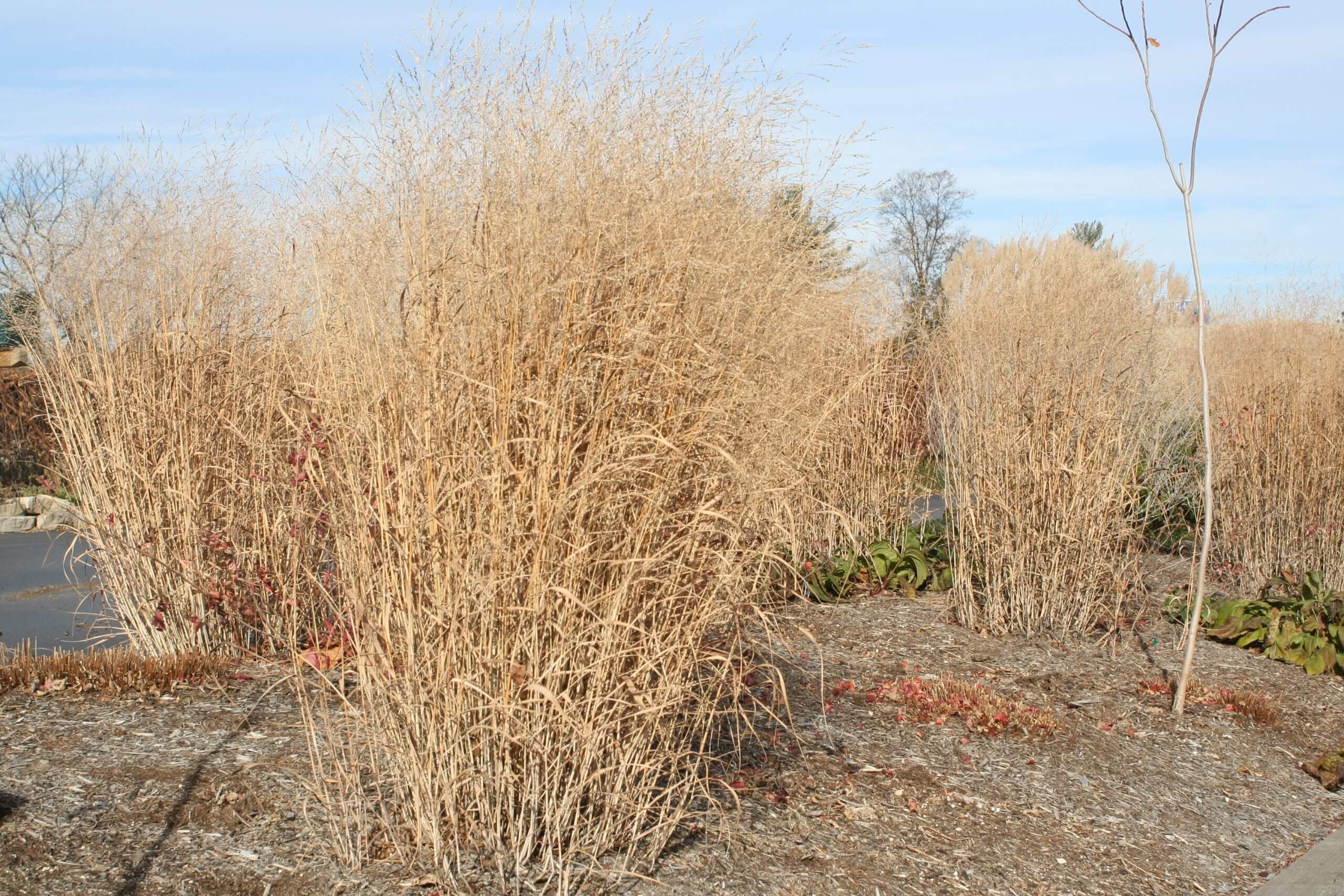
Grasses
The seeds of some garden grasses are also popular with birds. Highly ornamental annual millet (Pennisetum glaucum) comes in shades of purple, burnished bronze, and gold and its upright seed heads are highly sought after by birds. ‘Jade Princess’ is a particularly garden-worthy form with vibrant green blades and burnished brown heads.
Many attractive perennial grasses are good food for wildlife. A grass for partially shaded locations is northern sea oats (Chasmanthium latifolium). Its beautiful seed heads tend to shatter by early winter, but they are an important food for birds and rodents.
Little bluestem (Schizachyrium scoparium) is a very desirable small prairie grass with persistent seed heads that last into midwinter. The upright ‘Standing Ovation’, introduced by North Creek Nurseries of Landenberg, PA, has a strong upright habit and purplish-bronze winter color in addition to wildlife value.
The tall, breezy switchgrass (Panicum virgatum) is one of the most popular of all large, bunching ornamental grasses. Its fine seed heads offer winter interest and feed animals. Seek out the tall, blue-green ‘Northwind’ and ‘Dewey Blue’ for their strong, upright habits and good seed set.
Winter Fruits for Wildlife
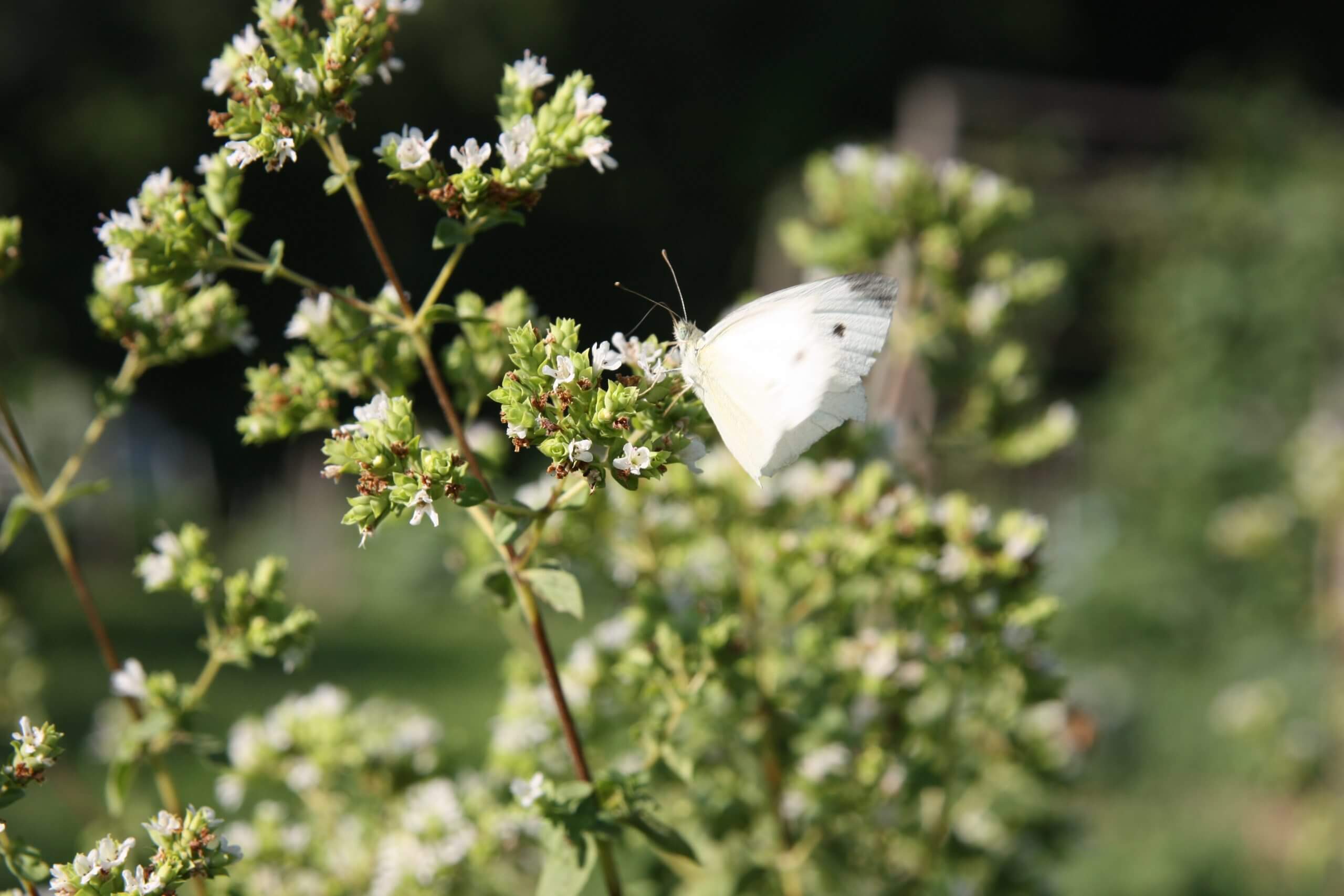
Crabapples, berries, hips and other colorful fruits of winter are also favored by winter animals of all kinds, particularly birds. They are also some of the easiest plants to grow in the winter landscape. Just be sure you have plenty of room and lots of light—many of these plants are sun-loving and relatively large.
Berries
The ‘Winter King’ hawthorn (Crataegus viridis ‘Winter King’) is a small fruiting tree with bright red pomes that remain beautiful into midwinter and are eaten by many winter birds, such as cedar waxwings. Crabapples also fall into this category. The red-fruited ‘Prairifire’ and Red Jewel™ and golden-fruited ‘Lancelot’, offer exceptional disease resistance as well as loads of beautiful winter fruits for wildlife.
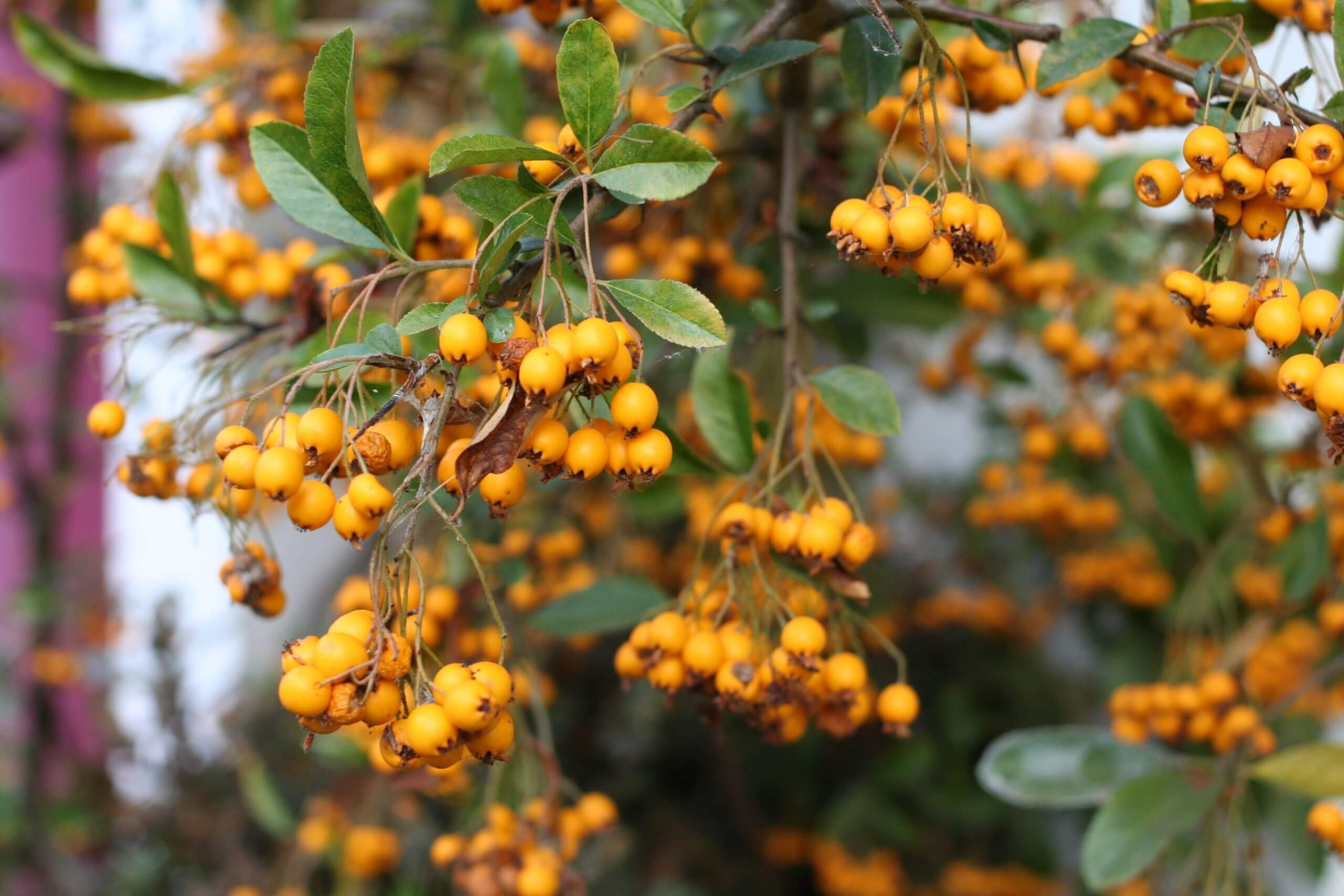
Winterberries (Ilex verticillata), beautyberries (Callicarpa spp.), firethorn (Pyracantha coccinea) and cranberry cotoneaster (Cotoneaster apiculatus), are three highly landscape-worthy shrubs with beautiful berries for the birds. All have cultivated variants that can be found in most garden centers. Their persistent winter fruits are also gorgeous—adding lots of bright color to the yard and garden when little can be found.
Nuts
Nuts of all forms are eaten mostly by larger wildlife. Oaks (Quercus spp.), walnuts (Juglans spp.), and beechnuts (Fagus spp.) all offer exceptional value to wildlife. Nut-producing shrubs, such as the American hazelnut (Corylus americana) are also fair game for the margins of any large garden or landscape and produce edible nuts that are just as tasty to homeowners as they are to squirrels and deer.
It is likely that many already have many of these plants in their yards, but it never hurts to add a few more to further beautify outdoor spaces while also making them more palatable to the birds and other animals. Dwindling habitat and food sources make our yards and gardens that much more important for providing much-needed winter forage for our animal friends.
Table: Common North American winter birds and their favorite foods from yard and garden
| Bird | Millet | Sunflower Seed | Fruits | Thistle Seed |
| American Goldfinch | X | X | X | X |
| Blue Jay | X | X | ||
| Cardinal | X | X | X | |
| Carolina Wren | X | |||
| Cedar Waxwing | X | |||
| Chickadee | X | X | ||
| Mourning Dove | X | X | X | |
| Mockingbird | X | |||
| Nuthatch | X | X | ||
| Tufted Titmouse | X | X |
Data gathered from www.allaboutbirds.org
